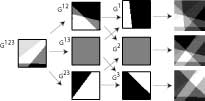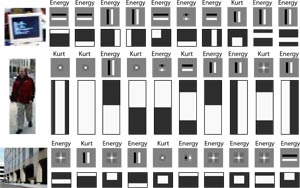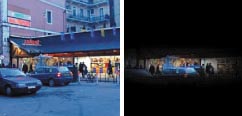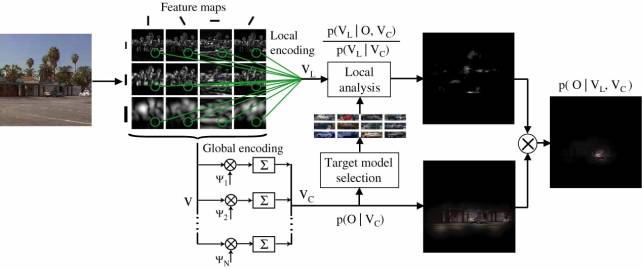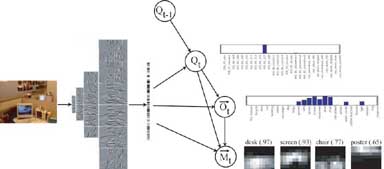There is general consensus that context can be a rich source of information about an object's identity, location and scale. In fact, the structure of many real-world scenes is governed by strong configurational rules akin to those that apply to a single object. There is increasing evidence of an early use of contextual information in human perception. However, object-centered approaches dominate the research in computer vision. Under favorable conditions, the multiplicity of cues (color, shape, texture) in the retinal image produced by an object seems to provide enough information to unambiguously determine the object category. Under such high quality viewing conditions, the object recognition mechanisms could rely exclusively on intrinsic object features ignoring the background. However, in situations with poor viewing quality (caused, for instance, by large distances) context appears to play a major role in enhancing the reliability of recognition.


(a car and a person? the blob on the right is identical to the one on the left after a 90deg rotation) (paper.pdf )
In the absence of enough local evidence about an object's identity,
the scene structure and prior knowledge of world regularities provide additional
information for recognizing and localizing an object. Even when objects can be
identified via intrinsic information, context can simplify the object
discrimination by cutting down on the number of object categories, scales and
positions that need to be considered.
This movie illustrates how context can help object detection (movie.avi). The context is used to predict which is the most expected location of cars in the scene (center image), then this information is used to reduce false alarms of a car detector (right image).
Datasets and code
Publications
